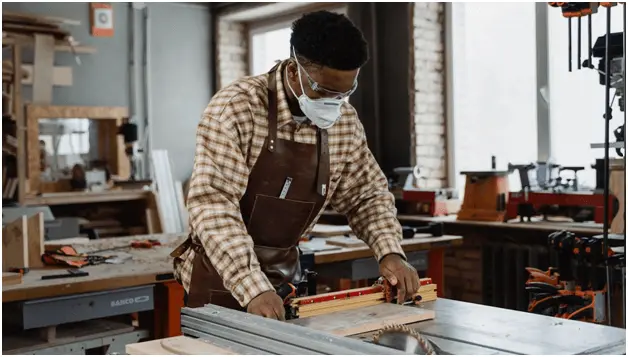Important Tips for Effective Drywall Fixing and Installment Strategies
Reliable drywall repair service and setup calls for a cautious technique. Understanding the kinds of drywall and having the right tools is crucial. Correct techniques and precise dimensions can considerably affect the end result. Numerous ignore necessary actions like taping and sanding, which can make or damage the final appearance. As tasks advance, typical challenges might occur that require interest. Checking out these ideas can cause a more polished and successful surface.
Recognizing Various Sorts Of Drywall
Comprehending the numerous kinds of drywall is essential for any kind of successful repair work or setup project. Drywall, generally referred to as gypsum board, comes in several ranges tailored for specific applications. Criterion drywall is the most commonly made use of kind, perfect for basic interior walls and ceilings. Moisture-resistant drywall, commonly green in shade, is designed for locations susceptible to humidity, such as cooking areas and bathrooms. Fireproof drywall, typically tinted pink or purple, is crafted to endure greater temperature levels and is often utilized in garages or near furnaces. Additionally, soundproof drywall helps in reducing sound transmission, making it appropriate for multi-family homes or videotaping workshops. Specialty drywall, like concrete board, is utilized in wet areas like showers or bathtub surrounds. Recognizing these types aids in selecting the right material for each task, making sure durability and performance out of commission or brand-new setups.
Important Tools for Drywall Fixing and Installment
Having the right devices is essential for reliable drywall repair work and installment. A high quality utility knife is essential for reducing drywall sheets precisely. A drywall T-square assists guarantee straight sides, while a taping knife is needed for applying joint compound smoothly over seams. Additionally, a drywall saw permits for eliminating harmed sections or fitting drywall around components.
For hanging drywall, a power drill with drywall screws is crucial, as it makes it possible for fast and safe and secure installation. A degree is additionally important to confirm that the drywall is straight and effectively lined up. Once it has actually dried out, a sanding block or post sander is essential for smoothing out joint compound. A determining tape is crucial for precise measurements, stopping waste and guaranteeing an appropriate fit. Equipped with these devices, people can tackle drywall projects successfully, leading to professional-looking results.
Step-by-Step Overview to Fixing Holes and Cracks
When addressing holes and cracks in drywall, having the right devices and products is necessary for a successful repair. This overview outlines the required items and gives a clear, detailed process to successfully bring back the surface area. Recognizing these aspects will assist guarantee a seamless surface and resilient outcomes.
Tools and Materials Needed
A well-appointed toolkit is vital for reliable drywall repair service and installation. Trick devices consist of an utility knife for reducing drywall, a tape procedure to guarantee precise sizing, and a drywall saw for larger openings. A putty knife is necessary for using joint substance smoothly, while a fining sand block or pole sander aids accomplish a seamless surface. For patching, a roll of fiberglass fit together tape or paper tape is required to reinforce joints. Additionally, a drill and screws are needed for securing brand-new drywall pieces. Essential products contain joint compound, primer, and paint to finish the fixing. Having these tools and products accessible assures a smoother, more efficient repair work procedure, generating professional-looking outcomes.
Repair Service Process Steps
Repairing openings and fractures in drywall calls for a systematic technique to assure a seamless coating. First, the area bordering the damages must be cleaned up thoroughly to eliminate dust and debris. Next, for tiny splits, a putty knife is made use of to use a joint compound uniformly over the location. For larger openings, a spot is required; the damaged area is removed, and a new item of drywall is suited place, safeguarded with screws. As soon as the spot remains in placement, joint compound is put on mix the edges. After drying out, sanding the area smooth is vital. Finally, the fixed surface area should be topped and painted to match the bordering wall surface, making sure an inconspicuous fixing.
Methods for Setting Up Drywall Panels
Setting up drywall panels requires careful planning and accurate execution to assure a smooth and specialist surface. It is necessary to gauge the wall area properly and cut the panels to fit, making certain that they straighten with the studs. Positioning the panels flat is usually advised, as this can enhance the structural honesty and reduce the number of view website seams.
Making use of drywall screws, installers should protect the panels every 16 inches along the studs, making sure a company hold. It is essential to avoid overdriving the screws, which can damage the paper surface. For edges and edges, making use of an utility knife permits for tidy cuts and a tight fit.

Completing Touches: Insulation, Mudding, and Sanding
As soon as the drywall panels are securely in location, the following vital action includes the finishing touches of taping, mudding, and sanding. Insulation is essential for creating a smooth change between panels and hiding joints. A high quality drywall tape, either paper or fiberglass mesh, need to be used over the seams, guaranteeing it sticks correctly to the mud that will certainly be used next.
Mudding, or applying joint compound, adheres to the taping procedure. This compound fills up voids and smooths out the surface area. An initial layer ought to be applied generously, feathering the edges to mix with the drywall. After the initial layer dries, succeeding layers might be needed for a flawless finish.
Fining sand is necessary to accomplish a smooth surface. A fine-grit sandpaper must be made use of to delicately ravel any kind of imperfections. Care ought to be taken to avoid over-sanding, which can damage the drywall - Drywall Installation Ogden Utah. Correctly performed, these completing touches create a specialist appearance ready for painting
Tips for Preserving Your Drywall After Setup
Keeping drywall after installment is vital to protecting its look and architectural honesty. Routine cleansing is essential; dust and dirt can build up, so gentle cleaning with a wet towel is advised. House owners need to also inspect for any kind of indicators of dampness or mold and mildew, especially in high-humidity areas like kitchens and washrooms. If any type of damage takes place, it is necessary to address it quickly to avoid additional problems.
Utilizing furniture pads can assist prevent scrapes or dents from hefty products. Additionally, repainting the drywall with a top notch, washable paint gives an added layer of security and makes future cleansing less complicated. Stay clear of making use of abrasive cleaners or devices, as these can harm the surface. Lastly, keeping a secure interior climate with suitable humidity levels will certainly help protect against buckling or fracturing over time. By adhering find more information to these suggestions, one can assure that drywall remains in superb condition for years ahead.
Often Asked Inquiries
How Much Time Does Drywall Take to Fully Dry After Setup?

Can I Mount Drywall Over Existing Drywall?
Yes, drywall can be installed over existing drywall, however it is vital to guarantee the underlying surface is safe and properly prepared. This technique can improve insulation and decrease installation time, though it might include weight.
What Is the most effective Method to Soundproof Drywall?
The most effective way to soundproof drywall involves making use of specialized soundproofing products, such as resilient channels, acoustic caulk, and sound-dampening drywall. These strategies effectively reduce audio transmission between areas, boosting total acoustic efficiency in living spaces.
Exactly how Do I Select the Right Drywall Density?
To pick the best drywall thickness, consider the application and area. Criterion residential walls usually utilize 1/2 inch, while ceilings or specialized areas might need 5/8 inch for extra strength and soundproofing capabilities.
Exist Eco-Friendly Drywall Options Available?
Yes, green drywall alternatives are offered. These consist of products made from recycled materials, gypsum boards with reduced unpredictable natural substances (VOCs), and those utilizing sustainable manufacturing processes, using environmentally-conscious choices for construction and remodelling projects.
Having the right devices is vital for effective drywall fixing and installment. For hanging drywall, a power drill with drywall screws is crucial, as it enables fast and protected installation. Secret devices consist of an utility knife for cutting drywall, a tape measure to assure precise sizing, and a drywall saw for bigger holes. Yes, drywall can be mounted over existing drywall, yet it is vital to assure the underlying surface is secure and adequately prepared. The ideal way to soundproof drywall entails using specialized soundproofing materials, such as durable channels, acoustic caulk, and sound-dampening drywall.